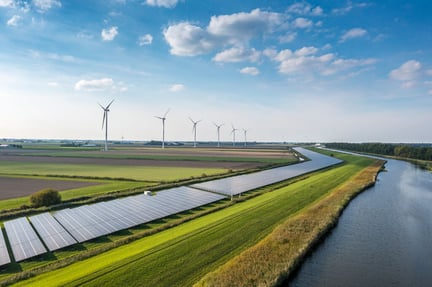Having performed a number of audits in 2020-2021 against the requirements of AWS, a trend of erroneous interpretation of some indicators was noticed.
It is important, to mention here that the companies assessed were all holders of the gold status certificate against EWS (European Water Stewardship) standard and moreover, they were all implementing efficient water management systems.
Most of the misinterpretations of the standard detected during the certification process, were connected with stakeholders, the perception of the term ‘water challenges’ and specifically of the ‘shared water challenges’. There is a simple explanation of this occurrence. AWS is much focused on the interaction of the companies with their stakeholders on water issues while EWS is more focused on the improvement of the technical efficiency. As a result, the companies had reached a high level of monitoring, managing and improving of their water usage and consumption. They were relying on their own means and efforts and, if stood alone, they were implementing excellent water management systems.
However, as already mentioned, the AWS standard requires the collaboration of the companies with their stakeholders. Moreover, the opinion of company’s stakeholders is considered crucial.
For most companies, channels and processes of communication and interaction with significant stakeholders in terms of water e.g. local Authorities, Water Suppliers, Wastewater providers, etc. were already in place prior to the launch of the AWS standard. In one way or another, all the companies had some kind of evidence to show that they had identified ‘shared water challenges’ with some of their stakeholders. Some companies, had gone even further, and they had engaged most of their stakeholders in dialogues, forums or similar, where water was one of the discussion topics.
Nevertheless, in a sample of 22 companies, very few had grasped correctly and in full length the indicators in relation to water challenges and shared water challenges.
Let’s see what this requirement is all about.
The first step is the identification of water-related stakeholders and evaluation of the degree of their engagement based on the level of interest and influence. So far so good. Almost all companies had a good perception of their stakeholders and they had performed a satisfactory evaluation of their engagement.
The second step is to identify the water challenges of the stakeholders. In other words, the identification of their water-related issues was requested. The best and simplest approach is, of course, the direct communication with the involved parties, either verbally or in written. The depth and level of approach with stakeholders poses the most significant challenge. The pandemic of COVID-19 played also a significant role, but the main issue was that the companies hadn’t thought of collecting this type of information. So, after clarification of the requirement, information from meetings, forums, e-mails or even from the press/ internet was gathered as supporting evidence for the identified water challenges. Although data wasn’t available for all stakeholders, the situation is expected to improve with the relaxation of the pandemic’s restrictions and the realisation of planned stakeholders’ forums, discussion panels and meetings.
The third step is the comparison of stakeholders’ water challenges with the ones identified by the company, the identification of the common ones and the proposal of measures and actions which can be taken in collaboration. All the companies had something to present in that area. As mentioned earlier, communication with the stakeholders didn’t begin with the decision to get an AWS certification.
The questions needed to be addressed to the stakeholders and the disclosure of appropriate and sufficient information to them was also key issues, in many cases.
In a nutshell, in most cases, it was a problem of misinterpretation rather than a non-conformance (in a sense of not fulfilling the requirements).
Therefore, for better approach of these requirements, potential AWS implementing sites are advised to:
- Refer to the analytical AWS guidance
- Train their involved employees on the AWS requirements
- Collaborate closely with Public Affairs & External Communication Departments in order to review existing processes and information related to stakeholders.


